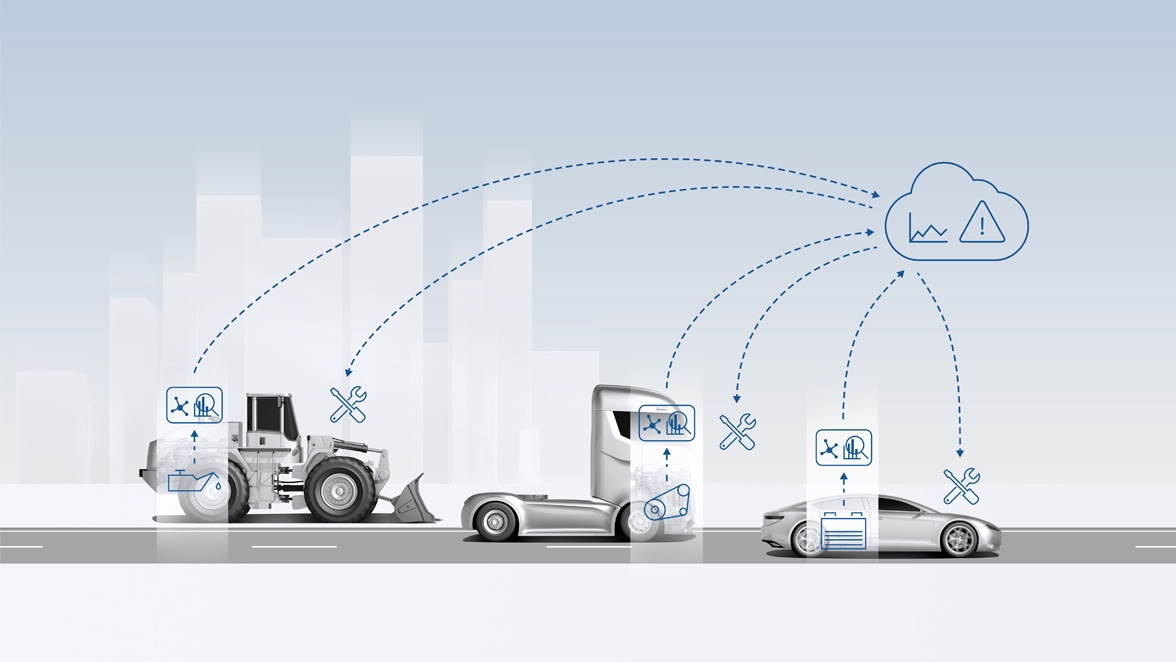Remote diagnostic system
Modern vehicles can generate thousands of fault codes. The Remote Diagnostic System allows you to understand breakdowns and prioritize repairs, reducing costs and increasing productivity.
Since about 2000, all vehicles have a remote diagnostic system that allows reading the diagnostic codes of the vehicle/machine when a breakdown occurs.
Why is this important for your business? The answer is simple: proper maintenance of these systems is the difference between their drivers completing delivery or being towed to a service shop.
Vehicle maintenance: then and now
For more than 100 years, most trucking companies have operated under the same operating procedure:
- The vehicle fails.
- The vehicle is towed to the nearest service location.
- The vehicle is repaired and restarted.
Today, customers have another option: remote diagnostics. Instead of waiting for the vehicle to fail, customers can use telematics with third-party systems to determine the condition of their vehicle. With this approach, customers can easily identify vehicles that have problems and proactively direct them to the service location of their choice in a controlled and scheduled manner.
Remote diagnostics: how does it work?
Modern vehicles have the ability to generate thousands of different fault codes. These fault codes can come from the engine controller, transmission controller, brake controller, and a variety of other controllers in the vehicle. These fault codes can indicate a variety of problems, from minor issues to serious issues.
A remote diagnostic system, employing telematics technology, facilitates the understanding of faults and prioritizes repairs. Remote diagnostics combines dynamic mapping, vehicle health reports, fault code action plans, and notification alerts.
When a failure occurs in the engine system, the telematics device transmits the information, along with GPS and other data, to be analyzed. Detailed information is sent to our platform that at the same time can generate an event and notify the client via mail, sms, API, etc., including descriptions of failures, severity and recommendations for action. The system can even map the truck’s location, with the nearest local dealer, repair shop, hotel or towing supplier. The notification can be sent through a mobile app, email, or other web services.
Advantages of remote diagnostics for truck fleets
Truck fleets can use these systems to determine the severity of the problem, the nearest service location and error history. In short, they can take the error code data and provide the customer with actionable information.
How remote diagnostics improves operations:
- Proactive planning of repairs and maintenance
- More accurate problem diagnosis and optimized spare parts and service
- Increased vehicle uptime and increased customer satisfaction
A tool for increased uptime and visibility
Any fleet employing heavy vehicles should consider looking for a remote diagnostic system. Specifically, if your fleet is interested in reducing downtime, reducing the number of towing bills, fixing vehicles at the service location of your choice, and having greater visibility into the status of your fleet, remote diagnostics is an essential tool.
It seems like a no-brainer. Why doesn’t everyone use it? Especially tradition. Not much has changed since the creation of the first diesel engine in 1896. The truck fails, is towed to the service shop and the vehicle is repaired. Remote diagnostics is only successful when there is a change of mindset and the fleet is committed to proactive management.
Fleet Success Story: Remote Diagnostics
“Data from the remote diagnostic system has been a game-changer for our company. For the first time, we can see real-time critical operational data that helps us make smarter decisions. We are actively monitoring fleet maintenance, preventive maintenance and how engine and transmission failure code data that we would never have had access to without this technology. We believe we will improve equipment uptime, reduce critical breakdowns of major components, and ultimately improve service to our customers. We are very pleased with our decision to say the least.”
